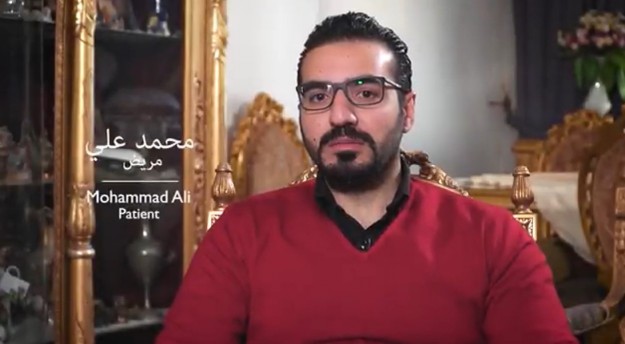The swelling of Mohammad’s arm affected everything in his life. He couldn’t work or play sports. For a few months, life as he knew it stopped.
Mohammad saw various doctors in his home country of Lebanon and finally was diagnosed with thoracic outlet syndrome, a condition that causes the veins between the base of the neck and the armpit to clog. There were not many options for local treatment, and if left untreated, he could die.
One of Mohammad’s physicians recommended he have surgery at The Johns Hopkins Hospital. Each year, Johns Hopkins treats more than 4,500 international patients just like Mohammad who have an array of medical needs that can’t be met in their home countries.
Because of the complexity of his Mohammad’s case, he made the journey from the Saida, Lebanon, to Baltimore to receive treatment at the Johns Hopkins Thoracic Outlet Syndrome Clinic. A group of medical experts at the clinic studied his medical history, ran tests to rule out similar conditions, and examined his bones and muscles to develop a clear picture of what was causing his arm and shoulder symptoms.
Mohammad learned he was genetically predisposed to thoracic outlet syndrome. Despite the grave diagnosis, Johns Hopkins experts gave him hope: Specialists there designed a surgery and treatment plan that would alleviate his symptoms so he could manage the condition back home.
This personalized approach gave Mohammad a clear understanding of what lies ahead and the confidence that it was his best treatment option.
He underwent two surgeries with a Johns Hopkins vascular surgeon who specializes in complex vascular reconstruction — both were a success. He responded well to the follow-up treatment, which he continues back home, where he has resumed his career.
“I was 29 years old,” says Mohammad, recalling the time of his diagnosis. “It was too early to think about death. I wanted my life back.”
And with Johns Hopkins’ help, he got it back.
Watch Mohammad’s story.
